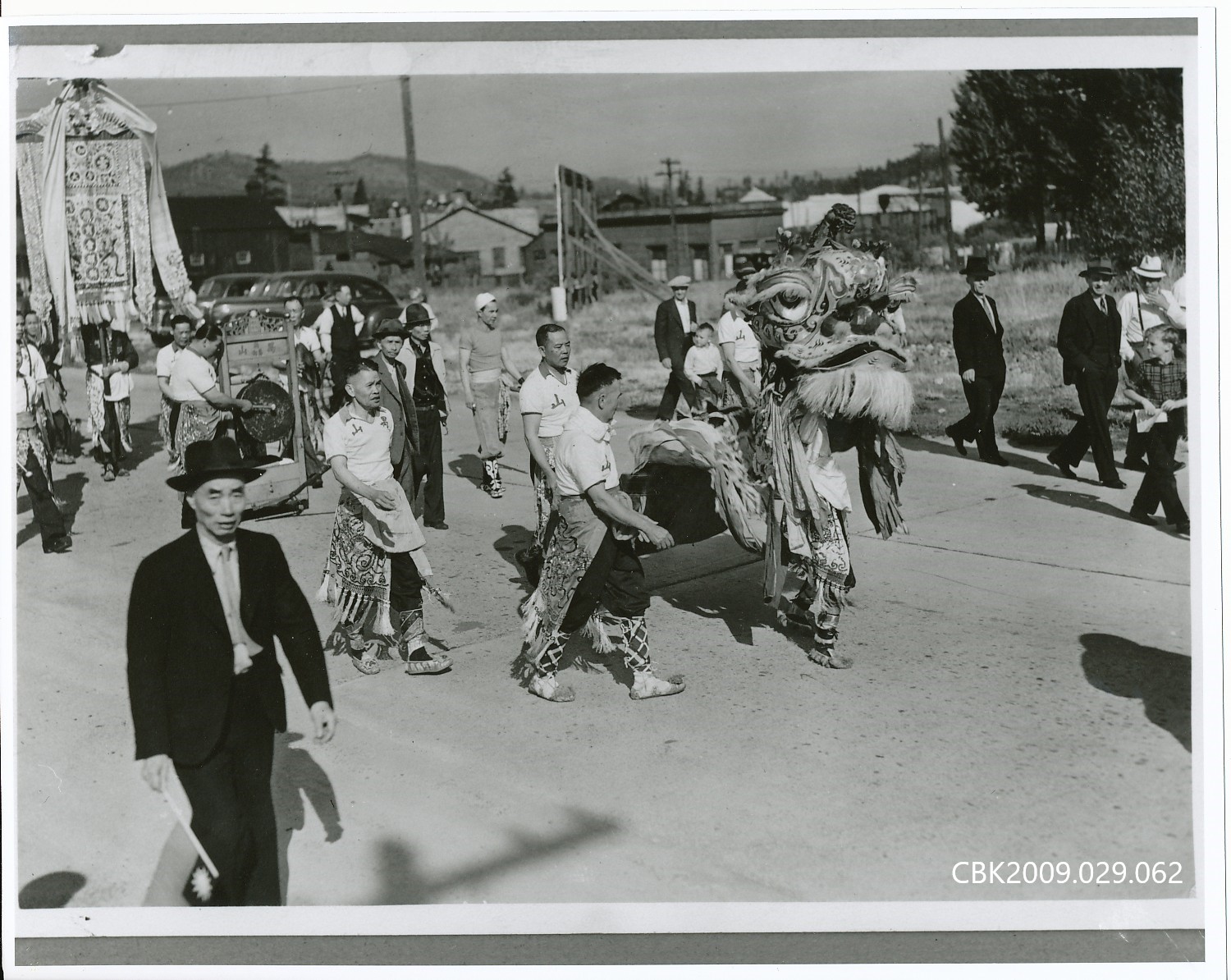In honour of Asian Heritage Month, MyEastKootenayNow.com explored the history of Cranbrook’s Asian community, from the gold rush to Chinatown and Japanese sex workers to Canada’s first female Chinese-Canadian RCAF recruit.
Early Asian settlement in the region came in the mid-to-late 1800s before Cranbrook was incorporated. This happened after gold was discovered in the Fraser River Valley in 1858.
“There were Asian people living in Fort Steele in the early 1860s. What’s interesting is that a number of them came up from California because they were following the gold rush,” said Nathalie Picard, Programming Coordinator with the Cranbrook History Crentre. “Immigration to Canada for Asian people was happening not only from across the ocean, but also with northern movement from the United States.”
Picard said while many Asian immigrants from the U.S. were on the hunt for gold, most of those coming directly from Asia, mainly China, were coming to work for the Canadian Pacific Railway (CRP).
“The railway was really looking for the cheapest workers they could find. The labourers they thought would work the hardest for the littlest amount of money. That created a lot of racial tension between white workers and Chinese workers,” said Picard. “The white labourers thought the Chinese workers were willing to put up with unsafe conditions and were accepting lower wages, therefore pushing the white labourers out of the job. It’s really kind of the start of where we’re seeing the racial tensions that would continue through the 20th century and up to today.”
According to the History Centre, about 6,500 out of the 9,000 CPR railway construction workers were Chinese by 1882.
Chinese workers were treated more harshly by the company than their white counterparts. Chinese workers received $1 per day, while white workers were paid $1.50 to $2.50 a day. The History Centre also notes that white workers had gear, tools and food provided to them, while Chinese workers had to pay for it themselves from their lower wages.
On top of that, Chinese workers were given more dangerous tasks while on the job, such as using explosives to break up rock formations. As a result, many of the Chinese labourers working on the railway died.
“When the railway was finally completed and memorialized in the famous photograph of CPR Director Donald Alexander Smith driving in the last spike, Chinese-Canadian workers were cleared from the scene and excluded from the photograph, despite the contributions they had made to completing the railway and the terrible losses they had suffered in the process,” said the History Centre.
After work with the CPR was completed and the region’s gold dried up, immigrants, including those of Asian descent, either moved on or settled into the area. The people who stayed formed a community in Cranbrook which was able to grow quickly.
“There was only a single Chinese laundry in the area that is now Cranbrook in 1899, and there were hundreds of people only 10 years later,” said Picard. “I understand that a lot of towns around Cranbrook did not allow and were actively hostile to such a degree that Chinese people living in those surrounding towns would move to Cranbrook where there was a larger community and they felt safer.”
Despite this feeling of safety, Asian people living in Cranbrook were still facing discrimination. The Asian community was segregated to one small portion of town, just a few neighbourhoods across the street from where the History Centre now stands.
“The Chinatown that was in Cranbrook, throughout the early 20th century, was a very small section of town. In 1904, it was all tightly bordered by the industrial district on 7th Avenue, a red-light district on 6th Avenue and CPR housing on 5th Avenue,” explained Picard. “It was also a dangerous area, because of the cramped construction and all the buildings being made of wood. There was a lot of fear within Cranbrook that Chinatown could basically light up.”
Picard said a fire did indeed spark in Chinatown in 1931. The blaze burned down a number of businesses and homes in the small community. Some residents took the opportunity to move away from Chinatown and into various other places in Cranbrook.
As mentioned earlier, Chinatown was bordered by a red-light district, which housed several brothels staffed by Japanese sex workers. In the early 1900s, Japanese brothels were common and successful businesses in B.C.
According to Dr. Ayaka Yoshimizu, Assistant Professor of Teaching in UBC’s Department of Asian Studies, Japanese brothels were operating in Cranbrook, Fernie, Nelson, Revelstoke, Kelowna, Vernon, Kaslo and Golden, among other places.
“Japanese brothels opened up along the newly opened Canadian Pacific Railway, and in interior mining towns. This happened in the last decade of the 19th century and were quite vibrant throughout the first decade of the 20th century,” explained Dr. Yoshimizu. “There was also a hierarchy within sex workers themselves, and it was organized by race. White women were more desirable than South American or Asian or Indigenous women. The ranks were reflected in the fees.”
Yoshimizu said the sex trade is an important part of Canada’s development which is often left unspoken.
“Regional governments, like city officials and police, tolerated prostitution early on. They would arrest sex workers and collect fines and bribes, but they also benefit from it. The sum of money collected from sex workers became an important source of income for the cities,” said Yoshimizu.
Yoshimizu based her research into the history of Japanese sex workers off the columns of reporter Shohei Osada, in his column series “Exploration of Devil Caves.” Yoshimizu said Osada ran his column in 71 installments between 1908 and 1909, and another 32 installments in 1912. The columns were published in Tairiku Nippo, a Vancouver-based Japanese language newspaper.
“They Identify Cranbrook and Nelson as two major towns for Japanese prostitution. In terms of scale, it’s rather small, but compared to other Japanese brothels in B.C., Cranbrook and Nelson were both major places,” said Yoshimizu. “In 1908, the source (Tairiku Nippo) identified four Japanese brothels in Nelson and four in Cranbrook.”
The buildings were side-by-side in both communities. In Cranbrook, they were located across from the CPR station and had a total of 10 workers.
Yoshimizu said many of the sex workers were actually forced into working at the brothels.
“In terms of Japanese sex work, usually there’s debt bondage. Women had to pay off their debt that was imposed on them before they become freelance sex workers,” said Yoshimizu.
On June 23rd, Dr. Yoshimizu will give an online talk about Japanese Migrant Sex Workers in Transpacific Kootenays with the Cranbrook History Centre.
More: Memories of Japanese Migrant Sex Workers in Transpacific Kootenays registration (Cranbrook History Centre)
As Cranbrook’s Asian community became more integrated with the rest of town, more residents began to move out of Chinatown. By the 1960s Chinatown had no longer existed.
With this spread into the wider community, Asian-owned businesses became staples in Cranbrook, such as the Nu-Way Cafe.
“As these Chinese families start to assimilate within the Cranbrook community, this is also reflected in their businesses becoming more successful and becoming actively patronized,” said Picard. “I think the Nu-Way Cafe is a great example of this because it was a business that so many people in Cranbrook, regardless of what community they were from, would frequent.”
In June of 1950, actress Joan Crawford stopped through Cranbrook and paid a visit to the Nu-Way Cafe.
The cafe became a prominent business after it first opened in Cranbrook in 1914. In May of 1952, the building caught on fire and about $2,000 worth of damage was done to the building and its inventory. It was later repaired and stayed in operation along Baker Street until 1996.
During World War 2, the first, and only, Chinese-Canadian was enlisted into the women’s division of the Royal Canadian Air Force (RCAF). Jean Lee, a Cranbrook resident, joined the RCAF in 1942 and served until the end of the war in September 1945.
“The way she was able to establish herself within Canada and have this prominent role by being a part of the RCAF really shows the kind of upwards movement that Chinese immigrants saw in the mid 20th century,” said Picard.
This article was written in collaboration with the Cranbrook History Centre.




